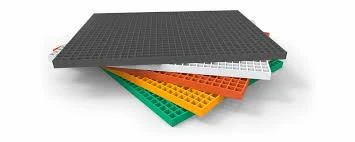
-
 Afrikaans
Afrikaans -
 Albanian
Albanian -
 Amharic
Amharic -
 Arabic
Arabic -
 Armenian
Armenian -
 Azerbaijani
Azerbaijani -
 Basque
Basque -
 Belarusian
Belarusian -
 Bengali
Bengali -
 Bosnian
Bosnian -
 Bulgarian
Bulgarian -
 Catalan
Catalan -
 Cebuano
Cebuano -
 China
China -
 China (Taiwan)
China (Taiwan) -
 Corsican
Corsican -
 Croatian
Croatian -
 Czech
Czech -
 Danish
Danish -
 Dutch
Dutch -
 English
English -
 Esperanto
Esperanto -
 Estonian
Estonian -
 Finnish
Finnish -
 French
French -
 Frisian
Frisian -
 Galician
Galician -
 Georgian
Georgian -
 German
German -
 Greek
Greek -
 Gujarati
Gujarati -
 Haitian Creole
Haitian Creole -
 hausa
hausa -
 hawaiian
hawaiian -
 Hebrew
Hebrew -
 Hindi
Hindi -
 Miao
Miao -
 Hungarian
Hungarian -
 Icelandic
Icelandic -
 igbo
igbo -
 Indonesian
Indonesian -
 irish
irish -
 Italian
Italian -
 Japanese
Japanese -
 Javanese
Javanese -
 Kannada
Kannada -
 kazakh
kazakh -
 Khmer
Khmer -
 Rwandese
Rwandese -
 Korean
Korean -
 Kurdish
Kurdish -
 Kyrgyz
Kyrgyz -
 Lao
Lao -
 Latin
Latin -
 Latvian
Latvian -
 Lithuanian
Lithuanian -
 Luxembourgish
Luxembourgish -
 Macedonian
Macedonian -
 Malgashi
Malgashi -
 Malay
Malay -
 Malayalam
Malayalam -
 Maltese
Maltese -
 Maori
Maori -
 Marathi
Marathi -
 Mongolian
Mongolian -
 Myanmar
Myanmar -
 Nepali
Nepali -
 Norwegian
Norwegian -
 Norwegian
Norwegian -
 Occitan
Occitan -
 Pashto
Pashto -
 Persian
Persian -
 Polish
Polish -
 Portuguese
Portuguese -
 Punjabi
Punjabi -
 Romanian
Romanian -
 Russian
Russian -
 Samoan
Samoan -
 Scottish Gaelic
Scottish Gaelic -
 Serbian
Serbian -
 Sesotho
Sesotho -
 Shona
Shona -
 Sindhi
Sindhi -
 Sinhala
Sinhala -
 Slovak
Slovak -
 Slovenian
Slovenian -
 Somali
Somali -
 Spanish
Spanish -
 Sundanese
Sundanese -
 Swahili
Swahili -
 Swedish
Swedish -
 Tagalog
Tagalog -
 Tajik
Tajik -
 Tamil
Tamil -
 Tatar
Tatar -
 Telugu
Telugu -
 Thai
Thai -
 Turkish
Turkish -
 Turkmen
Turkmen -
 Ukrainian
Ukrainian -
 Urdu
Urdu -
 Uighur
Uighur -
 Uzbek
Uzbek -
 Vietnamese
Vietnamese -
 Welsh
Welsh -
 Bantu
Bantu -
 Yiddish
Yiddish -
 Yoruba
Yoruba -
 Zulu
Zulu
Optimized Carbide Conical Button Bits for Enhanced Efficiency in Rock Drilling Applications
Carbide Conical Button Bits Designed for Efficient Rock Drilling
In the world of rock drilling, efficiency and effectiveness are paramount. The tools used in this demanding environment must withstand extreme conditions while delivering optimal performance. One such tool that has revolutionized the drilling industry is the carbide conical button bit. Known for their durability and precision, these bits are engineered to provide superior drilling capabilities in various geological conditions.
The Design of Carbide Conical Button Bits
Carbide conical button bits are designed with a conical shape, which allows them to penetrate rock effectively. The conical structure enables a larger contact area with the rock, distributing the impact force evenly and reducing wear on the bit itself. Each bit is embedded with tungsten carbide buttons—small, hard tips that are resistant to abrasion and chipping. This unique construction not only enhances the bit's performance but also extends its lifespan, making it a cost-effective choice for drilling operations.
Advantages of Carbide Conical Button Bits
1. Durability The tungsten carbide material is known for its hard-wearing properties. This means that the bits can withstand the harsh conditions of rock drilling, including high temperatures and extreme pressures, without losing their effectiveness. As a result, operators can drill for extended periods without the need for frequent replacements.
2. Versatility Carbide conical button bits are versatile tools that can be used in a variety of applications, from mining and tunneling to construction and geological exploration. They are suitable for different rock types, including hard and abrasive materials, making them a preferred choice for many drilling contractors.
3. Efficiency The design of the conical button bit promotes efficient drilling. The shape allows for better penetration, reducing the overall drilling time and improving productivity. Operators can achieve deeper and more accurate holes in a shorter amount of time, which is crucial in competitive environments.
carbide conical button bits designed for efficient rock drilling ...

4. Reduced Vibration and Noise One of the challenges in rock drilling is managing vibration and noise produced during the drilling process. The design of carbide conical button bits minimizes these issues, leading to a smoother drilling operation. This not only improves the operator's safety and comfort but also reduces the environmental impact of drilling activities.
Applications in the Industry
Carbide conical button bits are used in a wide range of industries, including mining, oil and gas, and civil engineering. In mining, they are essential for drilling blast holes to break rock efficiently, allowing for the extraction of valuable resources. In the oil and gas sector, these bits are utilized for drilling exploratory and production wells, where precision and reliability are crucial.
In construction, carbide conical button bits are employed for various tasks, including foundation drilling and rock excavation. Their ability to tackle tough geological conditions makes them indispensable tools for engineers and contractors striving to complete projects on time and within budget.
Conclusion
As the demand for efficient and effective drilling solutions continues to grow, carbide conical button bits stand out as a key component in the rock drilling industry. Their innovative design, combined with the durability of tungsten carbide, ensures that they meet the high standards required for modern-day drilling operations. By investing in quality carbide conical button bits, operators can enhance their drilling performance, reduce downtime, and ultimately achieve greater success in their projects.
In summary, the carbide conical button bit is not just a tool; it represents a significant advancement in the field of rock drilling. Its unique design and high-performance characteristics make it an essential asset for any drilling operation, poised to meet the challenges of today and the future. As technology continues to evolve, the reliance on efficient and durable tools such as these will only increase, driving further innovation and productivity in the industry.









